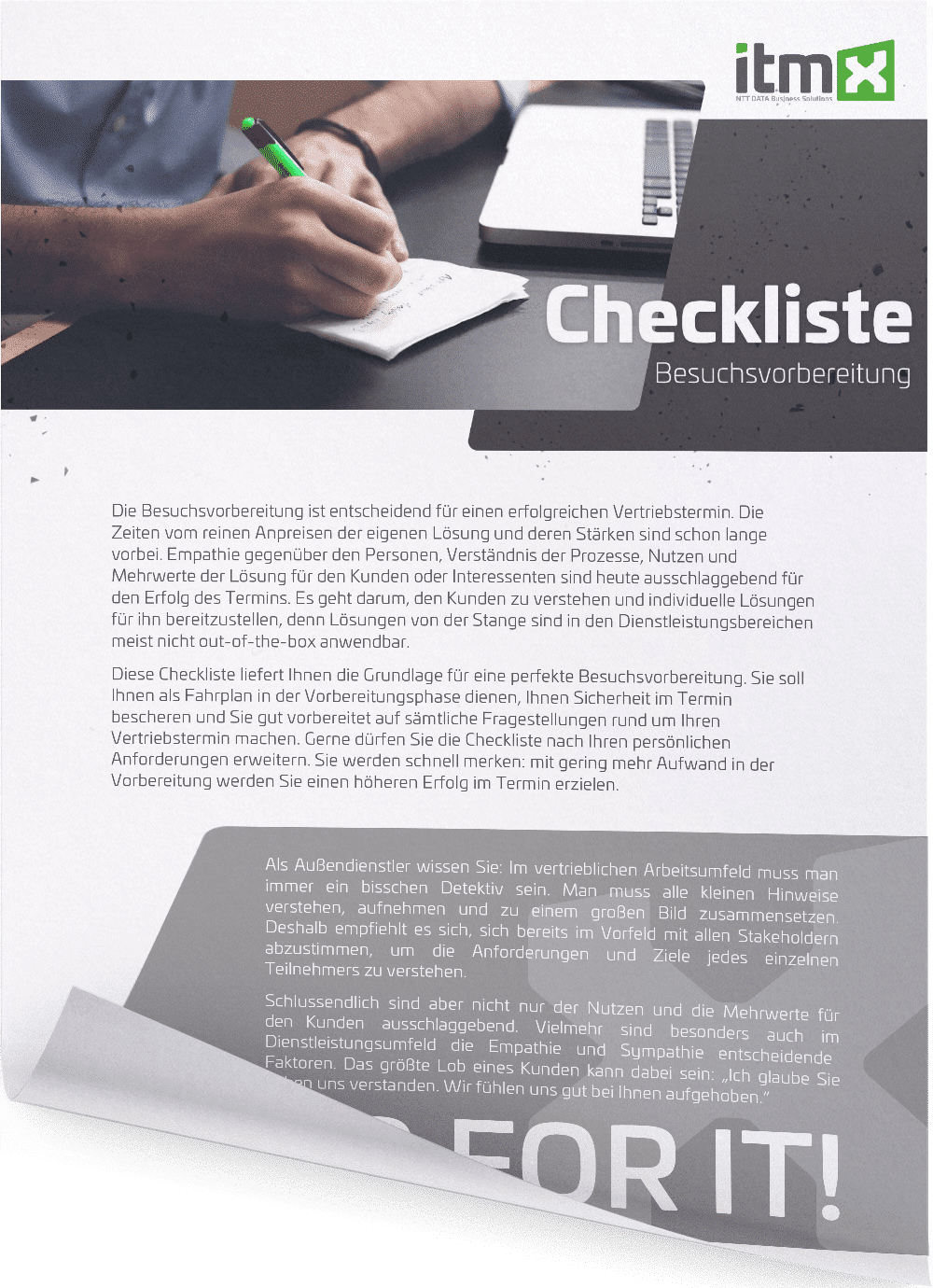Are customer visits still up-to-date? Come find out
At the latest since the contact restrictions of COVID-19 this question is more topical than ever. Almost overnight, every company was forced to rethink its internal and external processes and avoid contact points between people as much as possible. Virtual meetings have become established on various platforms, such as Microsoft Teams, WebEx or even Zoom and offer completely new possibilities. Even today, after the general shutdown has already been lifted for small groups and the “normal” everyday life is slowly returning, appointments often still take place remotely. This raises the question: is the classic customer visit still state of the art?
I am sure that Corona will also have medium and long-term effects on our society and interpersonal relationships. Some process steps will probably also take place digitally in the future. It remains to be seen whether the customer visit will be part of it.
Today, sales is an instrument that must be placed at the right moment
Even in the digital age, in which many companies play up and down the topic of customer journey and customer experience on virtual platforms, it is still essential to build personal relationships with prospective customers or customers and maintain their personal networks.
But the sales department is no longer the main sales instrument. Rather, it is a touchpoint within the customer journey that must be placed at the right time. In concrete terms, this means that sales is used less and less often than the initial contact. The classic cold acquisition has been dead for years. No customer today wants to make a phone call that is poorly prepared and does not address their needs. The times of “Hello? Do you want to buy? No? that’s a pity, but thanks and goodbye” are long gone.
The Internet already offers too much information tailored to personal needs.
Lead qualification is crucial for success
In the digital age, sales should only be concerned with the right leads in addition to existing customers. Ideally, the right lead means that marketing has pre-qualified the lead in advance thanks to strategic lead management, so that sales knows exactly who the other party is and what their challenges are. Now the lead can be processed in a targeted manner and solution approaches can be discussed instead of just bluntly promoting your own products or services.
Not all touchpoints have to be digital and it is important to me to discuss with you how important the visit, but especially its preparation and follow-up are. “90% of success lies in planning,” say numerous textbooks, and indeed my experience shows that visit preparation is the foundation for a good visit.
Sounds simple? But it’s not, because lead qualification can be implemented by marketing no matter how well. Unfortunately, if not everyone involved has the same level of knowledge and information is transparently accessible, even the best lead management is useless.
A CRM must be easy and fun to use
A CRM can help here. And many CRM implementations aim at transparency within the sales team, but in the end do not lead to the desired success. This is often due to the fact that CRM is often too complex and not all necessary information is available (such as open items or payment history from the ERP system). And often many employees are not even able to use the hundreds of features the system offers. The result is a CRM with poorly filled data that is rather useless. Or in the worst case, reluctantly used, even considered as a monitoring device.
A good CRM system should:
Twenty years ago, the hard-working salesman said: “In my customer file or notebook, I find all the information I need and I am perfectly prepared” And he was right. In the notebook were not only the notes of the conversation and the last orders, but also the name of the wife, the date of birth of the contact person, family background, preferences in sports, and much more. All this helped the sales colleague to lead a conversation in mindfulness and appreciation. Of course, even then, the protection of personal data was subject to special protection. Even though this has not yet been formally titled DSGVO. Trust was in the foreground and sales success was quickly achieved.
This is still the case today and not all touchpoints will be digital in the future. Personally, I am convinced that customer visits will not die out! How often are decisions for or against a supplier made based on sympathy and mutual trust. And here the commercial side plays a subordinate role. A customer visit helps to develop exactly this empathy and personal relationships. But today not only customers with whom a long-standing relationship already exists expect a highly personalized conversation. Today, interested parties also expect a personalized and above all individualized approach. A good CRM system supports the preparation, execution and follow-up of the visit.
About the author


